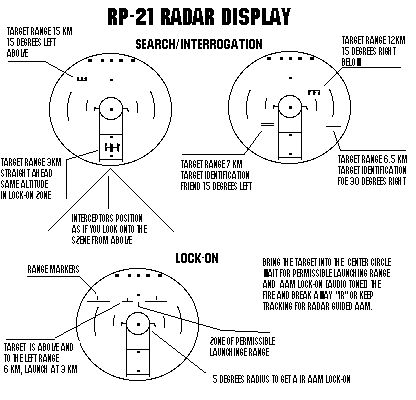









MiG-21 Radar
The MiG-21PF was the first MiG-21 version to deploy an airborne radar. It required the nose cone which houses the antenna to be enlarged. Another modification that went along was the incorporation of a continuously adjusting air inlet. The MiG-21F as well as all trainer versions (21U/US/UM) had a nose cone control with only three positions (In-below M=1,5; half out between M=1.5 ...1.9, full out M=1.9+). The new nose cone control used the pressure differential within the engine to continuously and smoothly provide the best operating conditions for the turbojet engine.
All versions except the Russian used MF's and most BIS's deploy the RP-21 radar NATO code name Spin Span. The other ones have the improved RP-22.
The RP-21
The working principle of the RP-21 relies on a continuously transmitting antenna that is move mechanically in horizontal lines +/-30 degrees from the centerline as well as vertically +/- 10 degrees.
The antenna is gyro-stabilized between +/-60 degrees of bank and +/- 40 degrees of pitch. The maximum detection range is 20 km with a maximum of 10 km for locking on. Real world data against a target of the size of a MiG-21 are rather lower, i.e. 13 km and 7 km respectively. The dead range is below 900 m due to the relatively low frequency. Both, the narrow detection sector as well as the range made MiG-21 pilots rely on ground based radar guidance. Minimum target altitude was around 1200 m. Even with the antenna raised to +1.5 degrees above the horizon and reduced sensitivity (decreasing range further) ground clutter usually makes a detection of low flying targets very difficult.

The RP-22
Still to come












RP-21
RP-22

